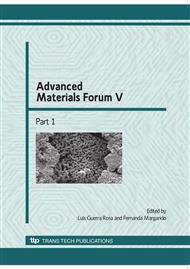p.1490
p.1496
p.1504
p.1511
p.1518
p.1525
p.1533
p.1541
p.1548
Interlaminar Fracture Characterization of a Carbon-Epoxy Composite in Pure Mode II
Abstract:
The interlaminar fracture toughness in pure mode II (GIIc) of a Carbon-Fibre Reinforced Plastic (CFRP) composite is characterized experimentally and numerically in this work, using the End-Notched Flexure (ENF) fracture characterization test. The value of GIIc was extracted by a new data reduction scheme avoiding the crack length measurement, named Compliance-Based Beam Method (CBBM). This method eliminates the crack measurement errors, which can be non-negligible, and reflect on the accuracy of the fracture energy calculations. Moreover, it accounts for the Fracture Process Zone (FPZ) effects. A numerical study using the Finite Element Method (FEM) and a triangular cohesive damage model, implemented within interface finite elements and based on the indirect use of Fracture Mechanics, was performed to evaluate the suitability of the CBBM to obtain GIIc. This was performed comparing the input values of GIIc in the numerical models with the ones resulting from the application of the CBBM to the numerical load-displacement (P-) curve. In this numerical study, the Compliance Calibration Method (CCM) was also used to extract GIIc, for comparison purposes.
Info:
Periodical:
Pages:
1518-1524
Citation:
Online since:
January 2010
Price:
Сopyright:
© 2010 Trans Tech Publications Ltd. All Rights Reserved
Share:
Citation:


